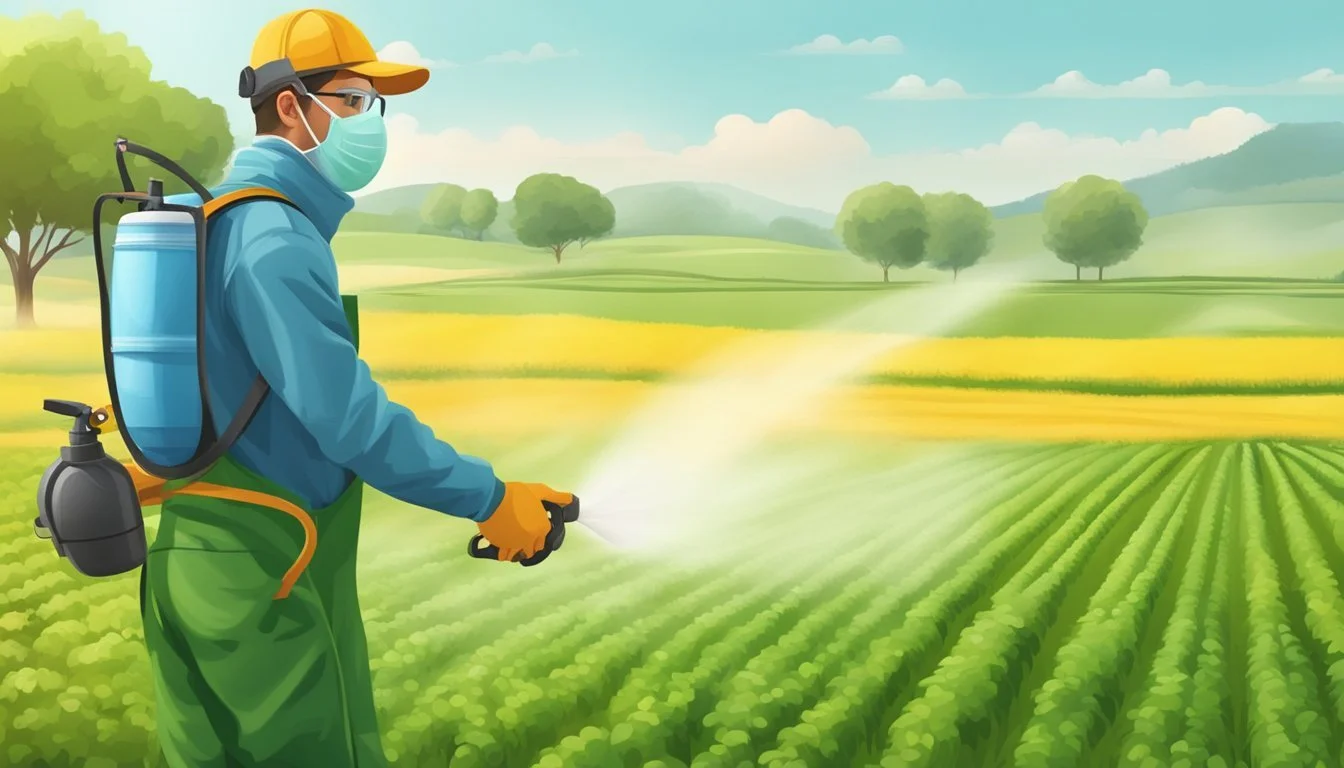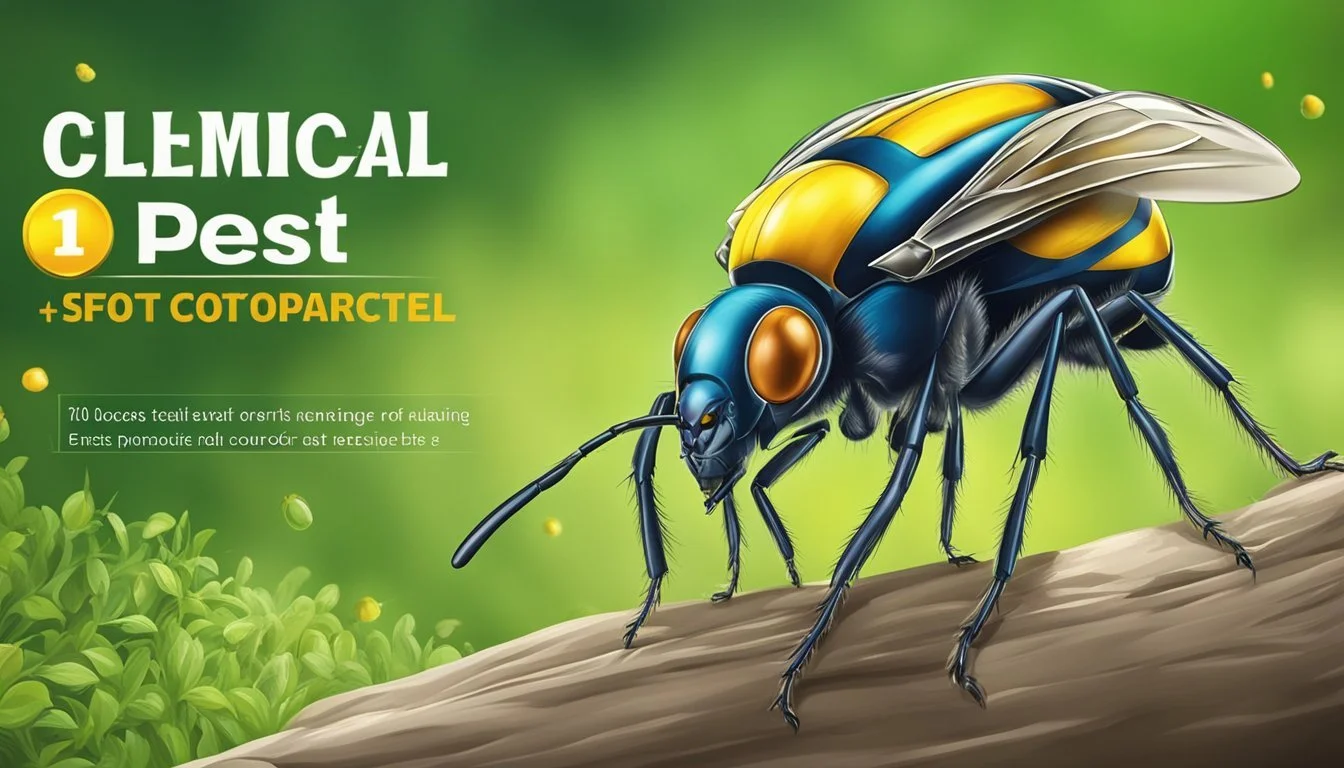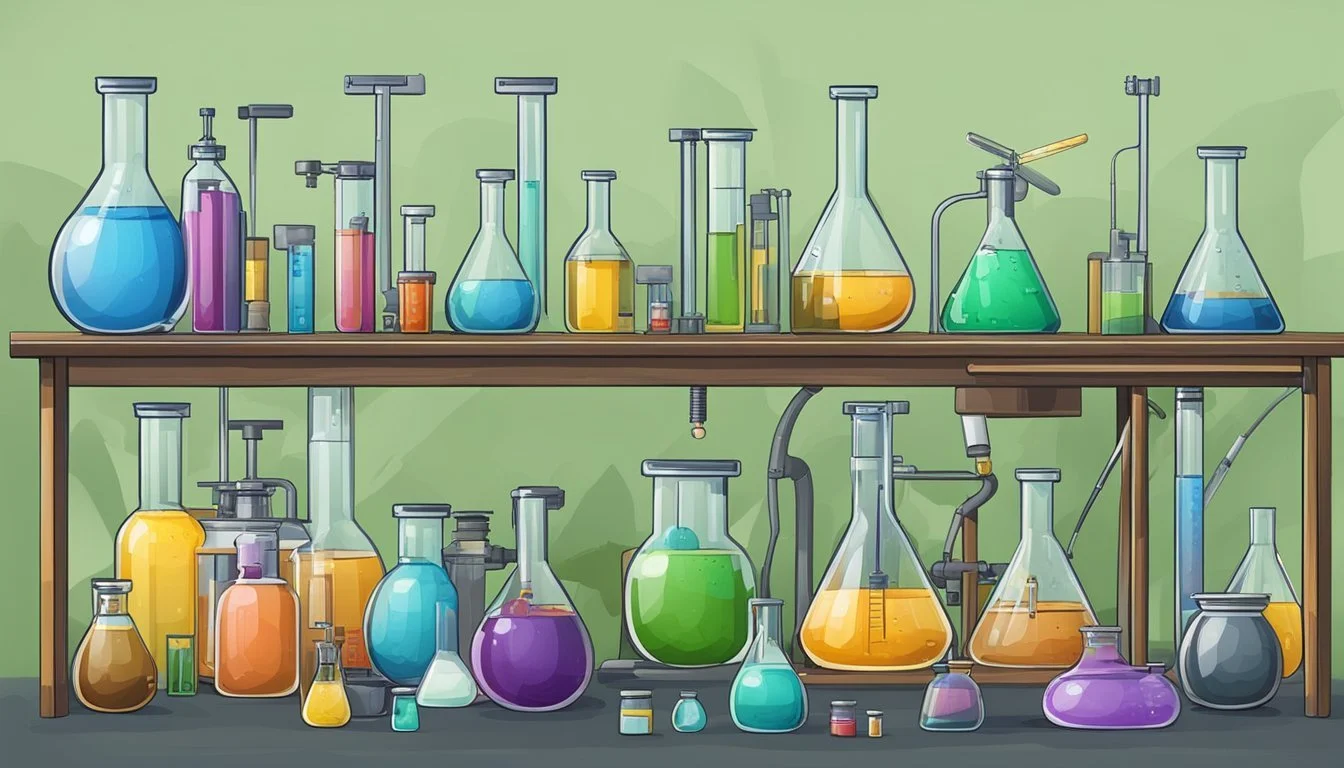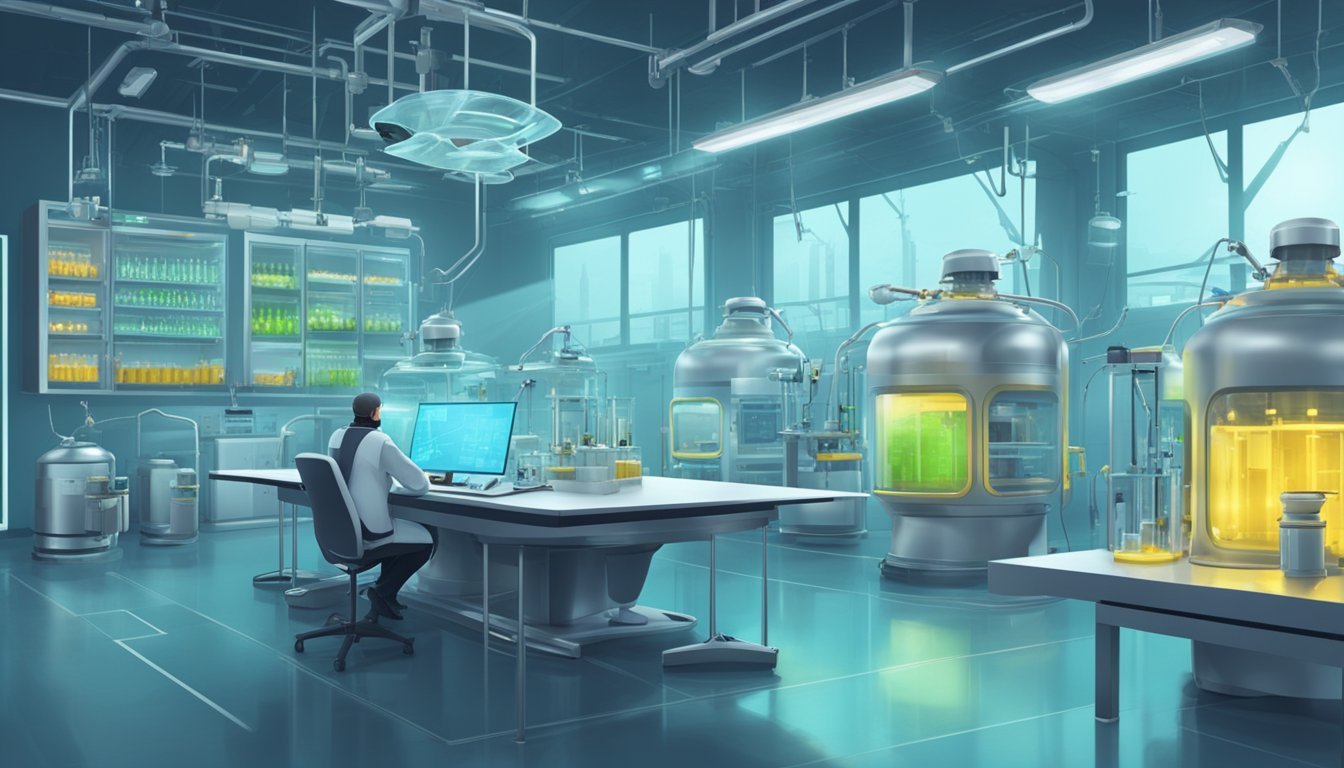Chemical Pest Control
Effective Strategies for Managing Infestations
Chemical pest control involves the use of pesticides to eliminate, repel, or manage pest populations. These substances are formulated to disrupt, deter, or destroy pests, which include insects, rodents, weeds, and fungi that can cause damage to crops, structures, and human health. The effectiveness of chemical pest control depends on the proper selection and application of the appropriate pesticide for the target pest, while also considering the safety and environmental impact.
Understanding the various types of pest control chemicals and their modes of action is crucial for achieving desired results and minimizing potential risks. Common pest control chemicals include insecticides, rodenticides, and herbicides, each designed to tackle specific pests. Professionals and consumers alike should be equipped with knowledge about the meaning and importance of these chemicals, how to choose the right one for their needs, and the functionalities of each in protecting properties and ensuring health and safety.
It is also essential to be aware of the precautions and toxicity associated with pest control chemicals. The appropriate use of these substances often calls for adherence to strict regulations and guidelines to prevent adverse effects on the environment and non-target organisms. Non-chemical methods are sometimes as effective and should be considered as part of an integrated pest management (IPM) approach, which combines multiple strategies for efficient and sustainable pest control.
Understanding Chemical Pest Control
Chemical pest control is a critical component in managing pest populations and involves the application of chemicals to eliminate or mitigate pests. This practice has evolved significantly over time, employs a variety of pesticides, and incorporates multiple methods tailored to specific pests and environments.
History and Development
The use of chemicals to control pests dates back centuries, with significant advances occurring in the last century. Chemical pest control has moved from rudimentary substances like sulfur and arsenic to more sophisticated and targeted chemicals that reduce harm to non-target organisms and the environment. As societal understanding of chemical impacts has grown, so has the advancement of safer, more effective products.
Types of Chemical Pesticides
Chemical pesticides are divided into several types based on the target pest:
Insecticides: Designed to target insects by various modes of action such as disrupting nervous systems or damaging exoskeletons.
Rodenticides: Aimed at mitigating rodent populations, these chemicals often work through anticoagulant properties.
Herbicides: These target undesirable plants and weeds.
Fungicides: Used to control fungal problems.
Each category of pesticide contains active ingredients that determine its specific impact on the target pest.
Chemical Pest Control Methods
Chemical pest control methods vary widely and involve:
Spot Treatments: Precise application on localized infestations.
Baiting: Using attractive substances combined with pesticides.
Fumigation: Introducing vaporized chemicals to enclosed spaces to eradicate pests.
Broadcast Application: Widespread chemical application over large areas, often for agricultural needs.
These methods necessitate careful planning and execution to maximize efficiency while minimizing potential harm to humans, non-target species, and the environment.
Chemical Pesticides and the Environment
Chemical pesticides, including herbicides, fungicides, and other control agents, have a significant effect on the environment. These substances have varying levels of toxicity and can impact non-target organisms and ecosystems.
Environmental Impact
The use of chemical pesticides can lead to various environmental challenges. Herbicides and fungicides may contaminate soil and water resources, affecting both the immediate area of application and potentially broader ecosystems through runoff and leaching. The toxicity of these chemicals can have detrimental effects on non-target species, disrupting the food chain and reducing biodiversity. Studies have shown that a significant portion of global agricultural land is at risk of pesticide pollution, raising concerns over soil health and the safety of water sources.
Soil Contamination: Can impact soil microbiome and fertility over time.
Water Pollution: May lead to the contamination of streams, rivers, and groundwater.
Non-Target Species: Negative impact on insects, birds, and aquatic life.
Pesticide Drift also poses a risk as it can transport pesticides through the air to areas not intended for treatment, impacting human health and non-agricultural environments alike.
Regulations and Safety Protocols
The Environmental Protection Agency (EPA) plays a critical role in setting guidelines and regulations to mitigate the adverse impacts of pesticides. The EPA assesses and approves all pesticides used within the United States, measuring their environmental impact and instituting measures to safeguard ecosystems. These measures include:
Risk Assessment: Detailed evaluation of potential environmental harms.
Use Restrictions: Limiting application rates and defining buffer zones.
Product Labeling: Clear instructions to ensure proper use and minimize risks.
Farmers and applicators are expected to adhere strictly to these regulations to mitigate environmental risks and protect public health.
Proper Storage and Disposal
Proper storage and disposal of pesticides are essential to preventing accidental releases into the environment. Storage facilities must be:
Secure: To prevent unauthorized access and contamination.
Designated Areas: Specific to chemicals to avoid cross-contamination.
For disposal, guidelines dictate that all excess chemicals and empty containers should be handled in a manner that prevents soil and water contamination. The EPA provides clear directives on how to dispose of pesticides safely to minimize the environmental impact. It's also important to utilize community hazardous waste programs when available, to ensure that disposal meets safety standards.
Usage and Application
Chemical pest control is a critical practice across various settings, from professional pest management in businesses to individual homeowners and agricultural producers. Each of these applications requires different strategies and products to effectively manage pest populations.
Professional Pest Control
Businesses often rely on professional pest control companies to handle infestations due to the complexity and scale of the environments they need to service. These experts utilize a range of insecticides, such as pyrethrins and permethrin, tailored to target specific pests. For instance, to manage arachnid populations, products containing bifenthrin may be employed for their action on the nervous systems of spiders and spider mites. Professionals also employ physical barriers when chemicals are less appropriate.
Homeowner Application
Homeowners need to apply pest control chemicals with caution by following label instructions strictly to ensure safety and effectiveness. For example, a Citizen's Guide to Pest Control and Pesticide Safety provides guidelines on selecting the right chemicals and using non-chemical controls wherever possible. Home applications typically involve ready-to-use products that target common household pests.
Agricultural Uses
In agriculture, the stakes are high when it comes to pest control, with entire crops at risk of being compromised. There is an emphasis on selective and efficient use of pest control chemicals to safeguard yields and minimize environmental impact. Advancements in pesticide application technology and best practices enable farmers to apply chemicals in a manner that maximizes coverage while using the minimum quantity necessary. This strategic approach is essential for maintaining a stable and reliable food supply.
Target Pests and Efficacy
The effectiveness of chemical pest control varies based on the type of pests being targeted. This section explores the efficacy of these chemicals against common household and agricultural pests.
Common Household Pests
Rodents: Chemical rodenticides are potent for controlling rat and mouse populations. They work through different mechanisms, such as anticoagulation or disrupting metabolic processes.
Ants: For controlling ant infestations, bait stations and insecticide sprays can be highly effective. Their success lies in targeting the colony rather than individual ants.
Cockroaches: Gel baits and insecticide sprays are used to eliminate cockroaches. The efficacy of these products can diminish if roaches develop resistance.
Flies & Mosquitoes: Flying insect aerosols and contact pesticides are effective against both flies and mosquitoes. However, their efficacy can be limited by factors such as wind and application method.
Agricultural Pests
Aphids: Specific insecticides targeting aphids are efficient, but their efficacy can be affected by weather and application timing.
Pest Infestation: Broad-spectrum insecticides are applied to control a range of agricultural pests. The concentration and frequency of application directly relate to control success.
Efficacy Against Different Pests
Efficacy varies depending on pest biology, behavior, and environmental conditions. Some pesticides are highly species-specific, while others may affect a broad range of pests. Regular monitoring and carefully calibrated application are key to maintaining efficacy and minimizing resistance development.
Risks and Safety
When it comes to chemical pest control, understanding the associated risks and implementing safety practices are paramount. This discussion will focus on the toxicological impact on humans and animals, as well as the crucial strategies for minimizing exposure to chemical agents.
Human and Animal Toxicity
Chemical pesticides vary widely in their toxicity levels. Certain compounds, such as organophosphates and carbamates, can significantly affect the nervous system. They are considered to be high in toxicity and may lead to severe poisoning if not handled appropriately. Prolonged or repeated exposure can compound these effects, causing long-term health issues. On the other end of the spectrum, some pesticides are classified as having low toxicity. These products are designed to be safer for humans and animals when used as directed. However, even substances with lower toxicity ratings can become hazardous in certain conditions or if misused.
Toxicity Ratings:
High: Immediate danger to life and health.
Moderate: Can cause illness upon exposure.
Low: Safer, but still require careful handling.
Minimizing Exposure
Minimizing exposure to pesticides is key in mitigating risks while still effectively controlling pests. Personal protective equipment (PPE) like gloves, masks, and eyewear should be worn at all times when handling these substances. Furthermore, following label instructions meticulously cannot be overstated—it's the law and a critical step in ensuring safety. Let's look at prescribed practices:
Personal Protective Equipment (PPE): Use appropriate PPE to protect skin, eyes, and lungs.
Label Adherence: Follow the manufacturer’s directions for application and safety to the letter.
Implementing strict storage and disposal protocols is equally important to minimize the risk of accidental exposure to both people and the environment. These measures help keep everyone, from the applicator to the end consumer, safe from the potential hazards associated with chemical pest control.
Integrated Pest Management
Integrated Pest Management (IPM) is a strategy that emphasizes the use of multiple methods to control pests in an effective and environmentally sensitive manner.
Principles of IPM
IPM is structured around a set of core principles designed to effectively manage pest populations. This approach involves:
Understanding Pest Biology: Knowledge of pest life cycles and their interactions with the environment is vital.
Monitoring: Regular observation of pest levels and their impact guides management decisions.
Thresholds: Determining at what point pest populations will cause economic harm helps in making treatment decisions.
Prevention: Emphasizing cultural practices to keep pest populations low.
Control Methods: Applying a suite of compatible tactics, such as biological, cultural, and mechanical means, and as a last resort, chemical controls.
Chemicals in IPM
In IPM, chemical pest control is used judiciously and only when necessary. They are part of a toolkit that includes:
Targeted Application: Use chemicals specific to the pest to minimize non-target effects.
Reduced Risk: Select products with lower risk profiles to protect human health and the environment.
Resistance Management: Rotate chemicals with different modes of action to prevent pest resistance.
Comparative Analysis
In exploring pest management strategies, it is critical to understand how chemical pest control compares to other methods such as biological and physical. This analysis will look at the effectiveness, principles, and applications of these approaches.
Chemical vs Biological Pest Control
Chemical pest control involves the use of synthetic substances to eliminate or manage pest populations. These pesticides can come in various forms, including sprays, baits, dust, and fumigants. The advantages of chemical pest control are often immediate results and the ability to address large-scale infestations rapidly. However, reliance on chemical pesticides can lead to environmental concerns, such as contamination, and the potential development of pest resistance.
On the other side, biological pest control employs living organisms, such as predators, parasites, and pathogens, to manage pest populations naturally. Methods include introducing natural enemies of the pest, which can maintain population levels below those causing economic damage. Biological control is lauded for its environmental sustainability and the reduced risk of pests developing resistance. Nonetheless, it typically takes longer to see the effects compared to chemical methods, and the control may be less precise.
Chemical vs Physical Pest Control
Physical pest control methods encompass a range of tactics that involve manual or mechanical efforts to manage pests. Examples include barriers, traps, and environmental modifications, which provide a way to control pests without the introduction of chemical substances. Physical methods can be highly effective for certain pests but may require more labor and can be less comprehensive when addressing large populations or multiple pest species.
Chemical pest control, while offering broad-spectrum efficacy and ease of application, poses risks including environmental contamination and human health hazards if not used responsibly. Given that chemical agents can be potent, it is crucial that they are applied by trained professionals who adhere to safety guidelines. It remains a commonly used approach due to predictability and quick action against infestations.
Innovations and Future Trends
The pest control industry is witnessing a remarkable shift towards innovative chemicals and sustainable practices that address both efficiency and environmental concerns.
Advancements in Chemicals
Recent research has catalyzed the development of insect growth regulators (IGRs), which are a groundbreaking class of chemicals. These IGRs work by disrupting the life cycle of pests, preventing reproduction and maturation without the use of traditional, more toxic substances. For example, innovations in new compounds has made it safer for both non-target species and the environment, as they are highly targeted and degrade more easily than their predecessors.
The integration of artificial intelligence (AI) has also propelled advancements in the precise application of pest control chemicals, leading to enhanced effectiveness and reduced waste.
Sustainability and Pest Control
Sustainability has become a guiding principle in the evolution of pest control practices. Pioneering research is filtering into the development of sustainable pest control solutions that are less reliant on harmful chemicals. Manufacturers are increasingly prioritizing sustainable technologies in both product design and material choice, seeking to reduce the ecological footprint of pest control methods and products.
The push for sustainable pest control is bolstered by societal and regulatory pressures, which are catalyzing the adoption of eco-friendly practices and driving the demand for green alternatives to conventional chemical pesticides.
Conclusion
Chemical pest control remains a critical tool in the arsenal against pest infestations. It is effective and often fast-acting, targeting specific pests quickly to minimize damage to crops, structures, and ecosystems. The effectiveness of these methods is well-documented, and professionals in the pest control industry are equipped with the necessary knowledge and tools to apply these chemicals safely.
However, the environmental impact and the potential development of resistance in pests necessitates cautious use. It is widely agreed that chemical control should be part of an integrated pest management strategy, where it is used in conjunction with biological and physical controls. This integrated approach helps to reduce reliance on chemicals and can lead to more sustainable pest management.
Future Outlook
Looking into the future, the industry is seeing a push towards more environmentally friendly and targeted solutions, which aim to preserve beneficial organisms and reduce collateral damage. Innovation in this area is driven by a better understanding of pest biology and ecology, resulting in the development of more sophisticated and sustainable pest control methods.
In conclusion, they will continue to value chemical pest control for its efficiency, while also recognizing the need for responsible use to ensure long-term viability and environmental health. The future points towards a more balanced approach, where chemical methods complement other tactics in a well-rounded pest management plan.
Frequently Asked Questions
Understanding the scope and implications of chemical pest control methods is crucial for a safe and effective pest management strategy.
What are the common examples of chemical pest control methods?
Chemical pest control methods encompass a variety of substances such as insecticides, herbicides, rodenticides, and fungicides. These can be further classified into contact poisons, systemic poisons, baits, and fumigants, each designed for a specific type of pest and situation.
How do integrated pest management strategies differ from traditional chemical pest control?
Integrated pest management (IPM) strategies emphasize the use of multiple techniques, including biological control, cultural practices, and chemical products, to manage pests. IPM aims to minimize risks to humans and the environment by using a judicious combination of methods, often prioritizing non-chemical means.
What are the potential advantages and disadvantages of using chemical control for pests?
Chemical control can offer immediate and potent action against pests, making it highly effective in many cases. However, disadvantages may include risks to non-target organisms, the potential development of pest resistance, and environmental contamination.
What is the most effective chemical for pest control?
There is no one-size-fits-all answer to the most effective chemical for pest control, as effectiveness varies by target pest, environment, and the chemical's properties. Professional pest control services investigate the infestation type and select an appropriate chemical agent accordingly.
How can chemical pest control impact human health?
Chemical pest control can pose health risks, such as respiratory issues, allergic reactions, or even more severe health concerns if improperly handled. It's vital for individuals to follow the safety guidelines provided on product labels and consider consulting licensed professionals for application.
What measures can be taken to mitigate the problems associated with chemical pest control?
Mitigation measures include thoroughly reading product labels, proper storage and disposal of chemicals, and employing preventive measures to reduce the need for repeat applications. Emphasis should also be placed on using the least toxic product possible and incorporating IPM strategies.









